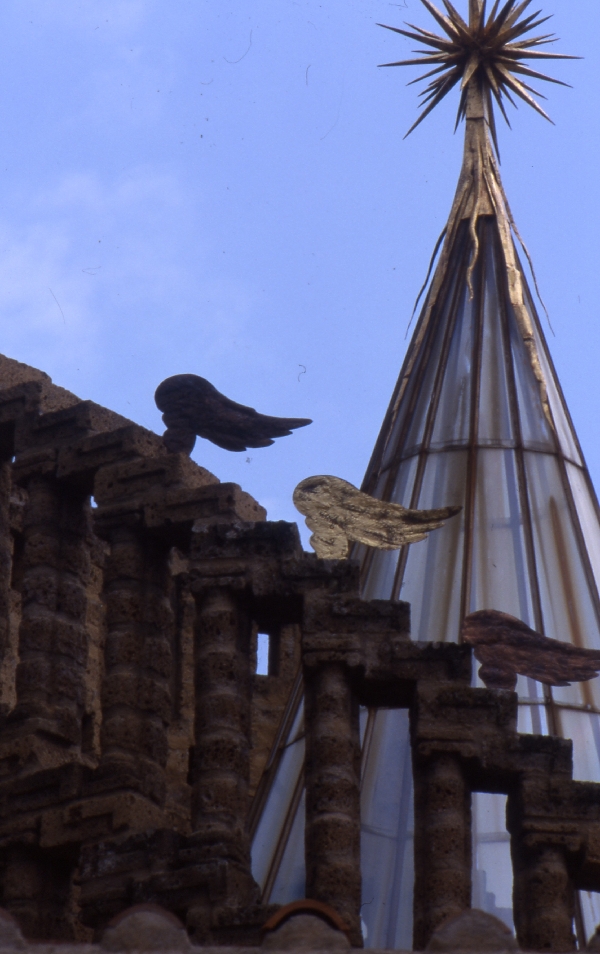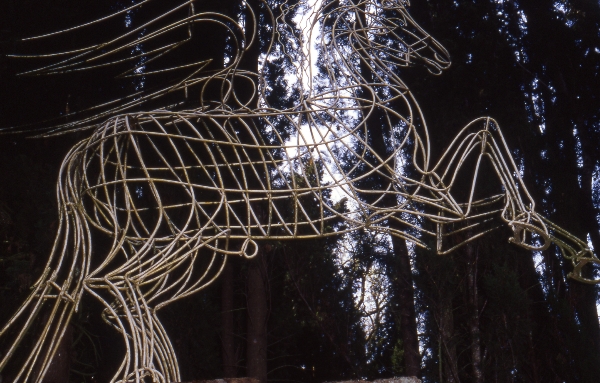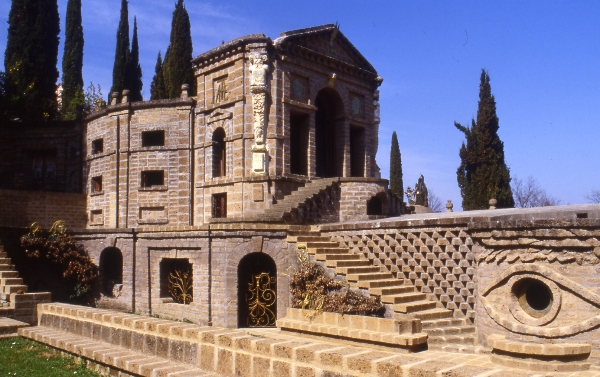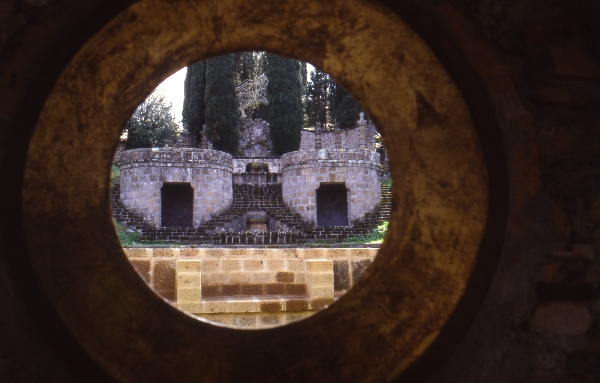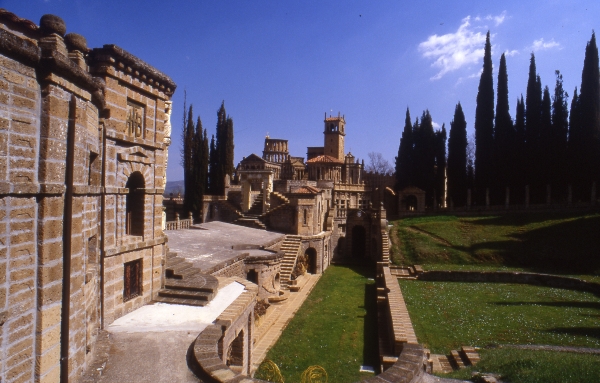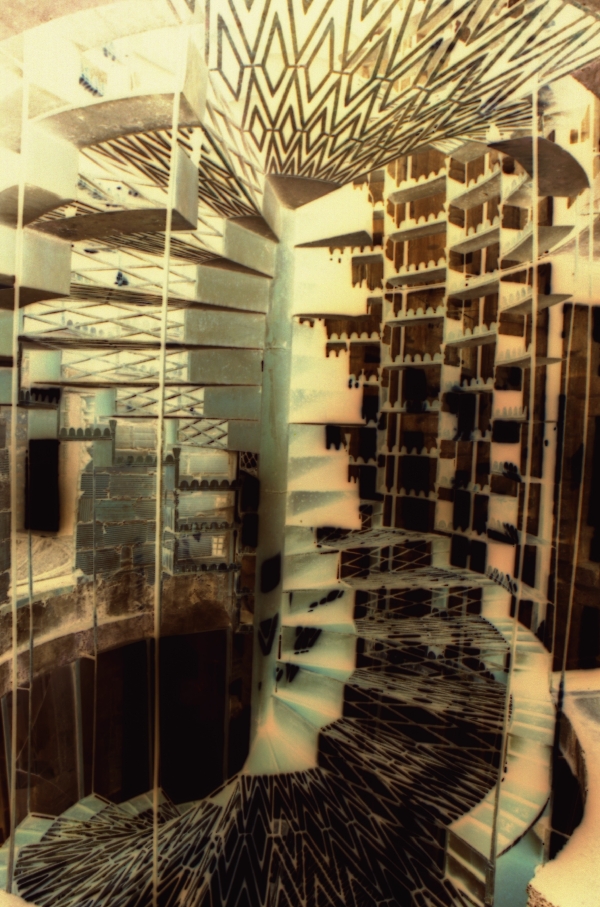
La Scarzuola
This post is also available in:
 Italiano (Italian)
Italiano (Italian)
“La Scarzuola” is one of the most evocative places in Umbria: located in the municipality of Montegabbione, in the province of Terni, it was built near a XIII century convent established by St. Francis himself. According to the official chronicles, in that very place, the famous saint built a hut in 1218: he chose the area where he had previously planted a rose and a laurel from which a fountain had miraculously gushed out. The hut was actually built with a marsh plant called “Scarza”, hence the current toponym of “Scarzuola”.
Later on, to commemorate that event, the Counts of Marsciano built a church and a convent, both entrusted to the Friars Minor, who lived there until the end of the XVIII century. The Marquises Misciatelli of Orvieto eventually acquired the whole estate.
In the second half of the XX century (in December 1957), the architect Tomaso Buzzi (1900-1981) from Milan became the owner of the entire complex; he then created an “ideal city” right next to it. Buzzi restored the convent and turned the friars’ garden into a wonderful green area that evokes the myth of love between Poliphilo and his favourite nymph. That’s the “sacred city”, which acts as a counterpart to the “profane city” area, also known as the “Buzziana”; the latter stands on a natural amphitheatre as a tuff citadel with several elements harmoniously connected to each other.
From 1958 to 1978, the architect designed and built a large theatrical scenography that he considered as a “stone anthology”, in the small valley behind the convent. Such elaborate creation was voluntarily incomplete, thus allowing the recovery of several visual experiences of the past: Villa Adriana for the gymnasium, the swimming pool, the spa etc., Villa d’Este (Tivoli) evoking the Rometta of architect-archaeologist Pirro Ligorio, the seven buildings in the Acropolis (Parthenon, Colosseum, Pantheon, Pyramid, Tower of the winds, Temple of Vesta, Tower bell), and Bomarzo (full of visual effects representing the boat, Pegasus and the monster).
The complex develops inside spiralling pergolas. Inside, a vertical axis originating from the skeletal statue of Pegasus leads, through a system of terraces, to an amphitheatre, the agnostic theatre, and the grass theatre: it reaches its end at the broken column tower and intersects a horizontal axis; the latter is delimited on the left by the “theatre of the bees” (“Teatro delle Api”), a stage with a musical labyrinth in the centre, and the “Buzziana” with the Acropolis on its right.
From the garden of the convent, visitors can access the main theatre (Teatrum Mundi). On both sides of the stage, there are two remarkable architecturally elements: the “Theatre of the bees” (“Teatro delle Api”) and the Acropolis with another stage; at the centre of the latter, there’s the “eye” of Buzzi-Atteone.
A driveway leads to the Tower of Meditation and Solitude. At the end of the climb, the Temple of Apollo appears, completely made of tuff, devoid of any decorations inside but the frieze that runs above and evokes the architraves of classical Greek temples. A portal with ruins of columns leads to the Tower of Babel, which features a spiral musical scale of seven octaves, which would make a sound at every step according to Buzzi’s original project.
Next to it, the Ianua Coeli portal leads to a small exhibition of ancient architectural works, juxtaposing without apparent connection, the Parthenon, the Colosseum, the Pantheon, the Temple of Vesta, the tower of the winds, the clock tower of Mantua, a glass pyramid, and the arch of Titus.
When Buzzi died in 1981, the city was only partially completed but thanks to his sketches, his heir Marco Solari finished the work. This place is now part of the “Grandi Giardini Italiani” circuit.
This post is also available in:
 Italiano (Italian)
Italiano (Italian)
Contatti
Montegabbione(TR)
0763 837463
info@lascarzuola.com
Altre info
11,00 euro
Su prenotazione
Su appuntamnento
